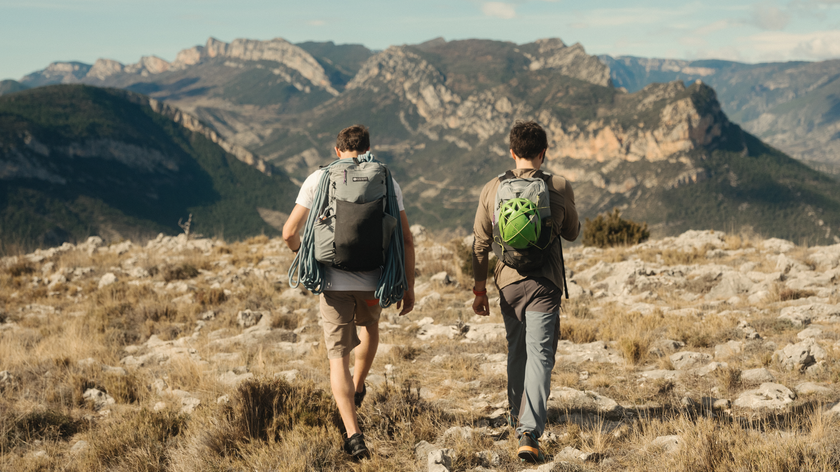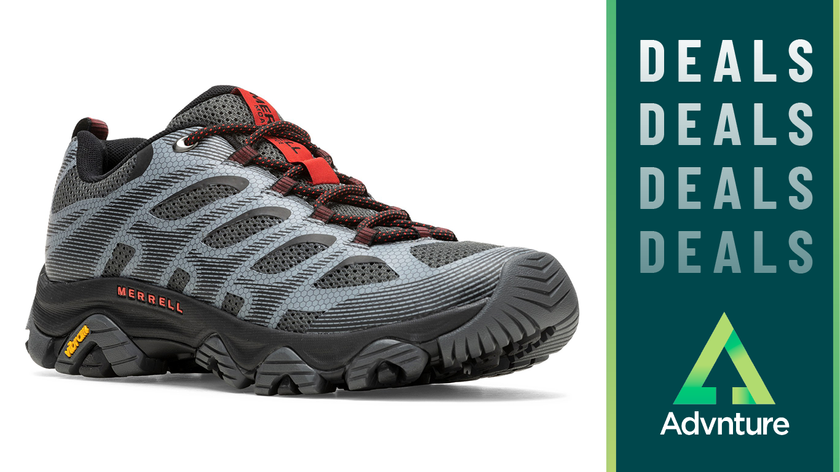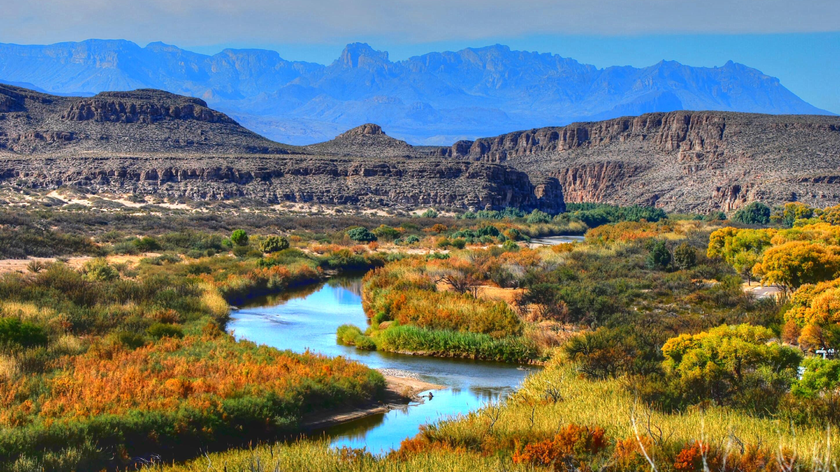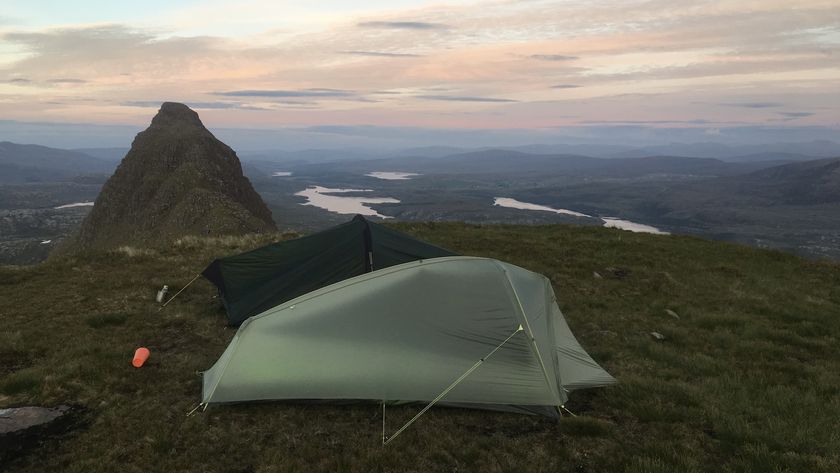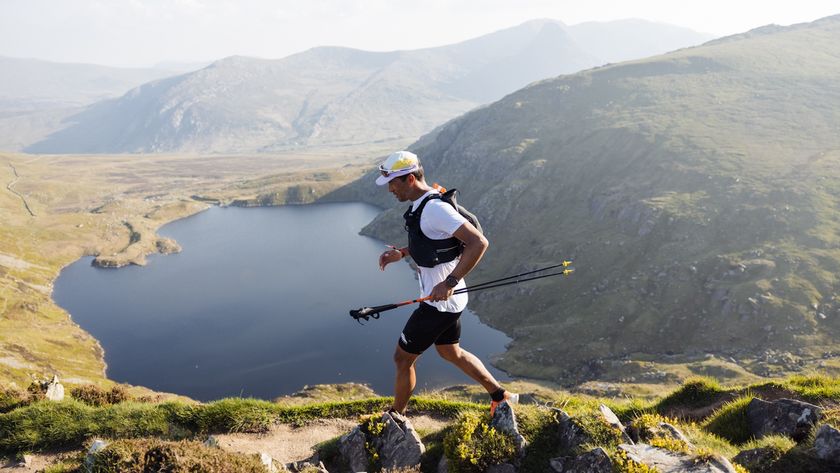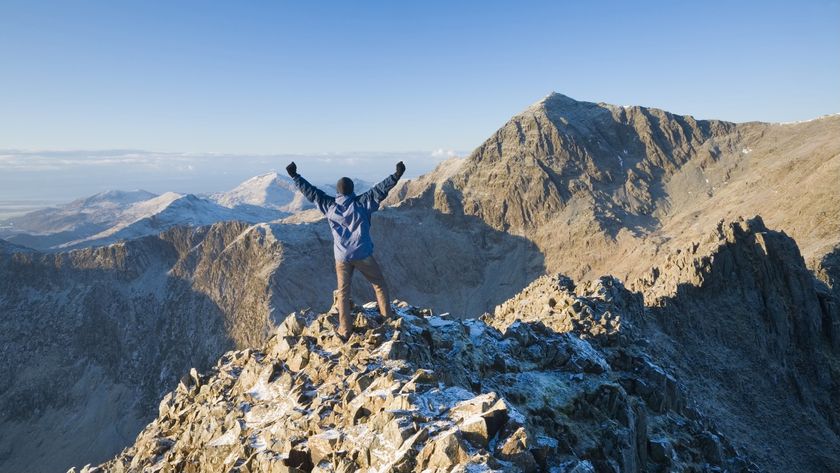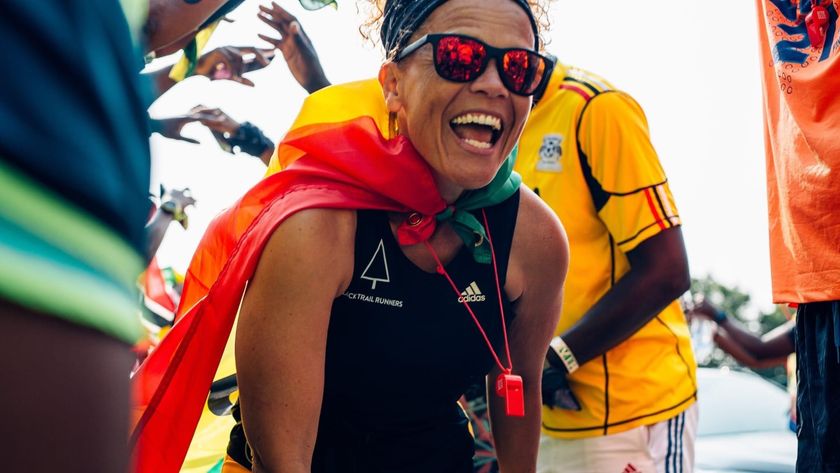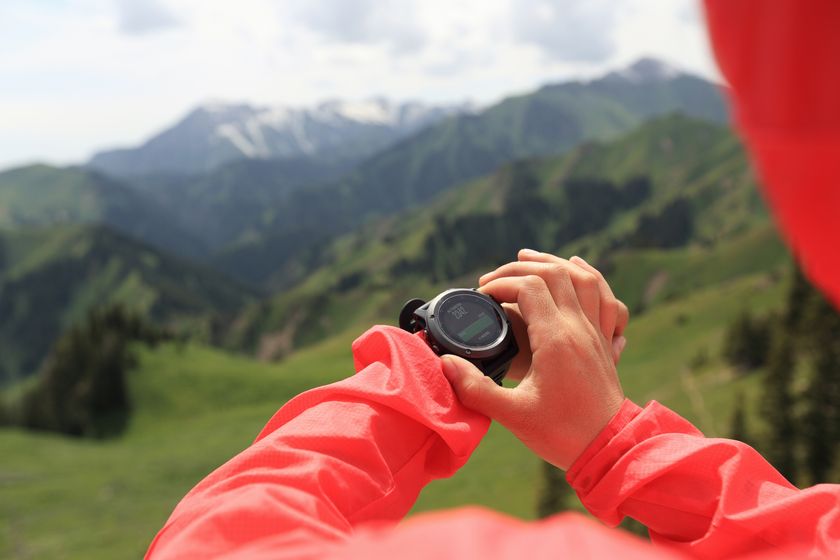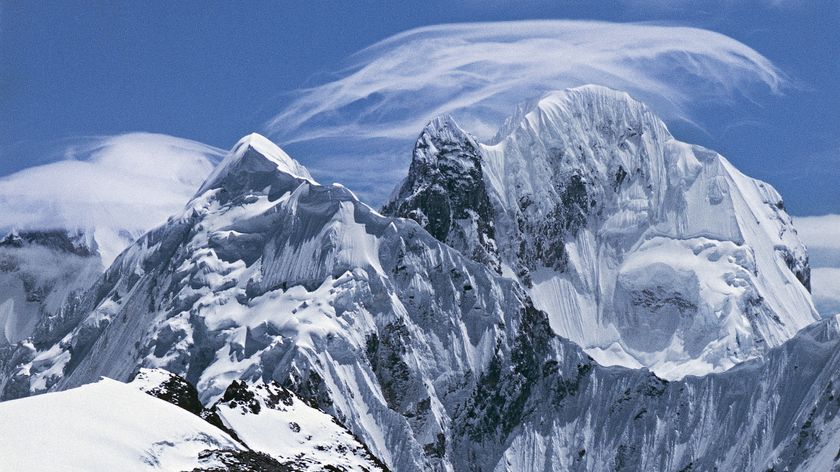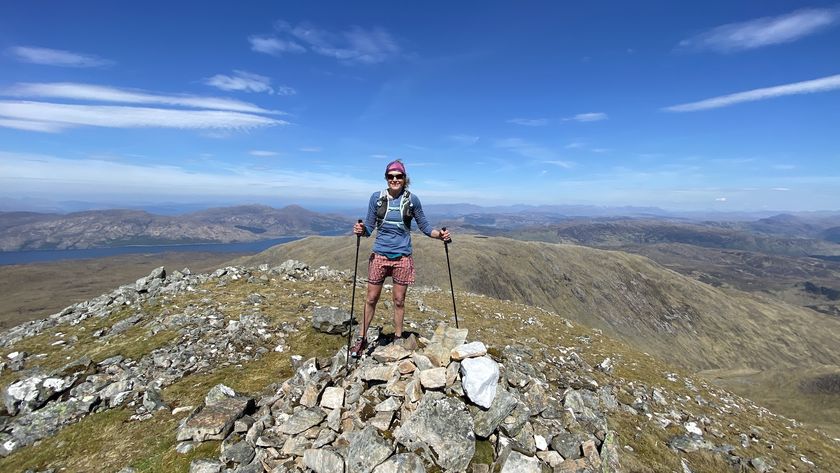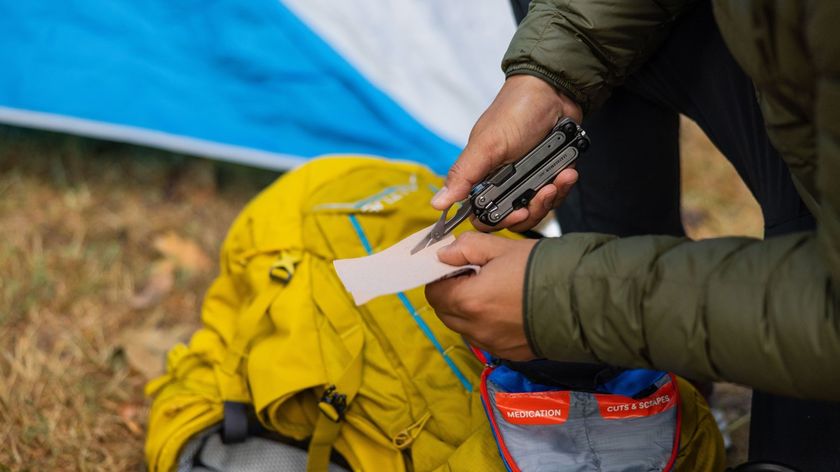Do you need a windbreaker jacket for hiking?
A look at the pros and cons of a windbreaker for hiking, and when it’s the best choice for your outdoor adventures
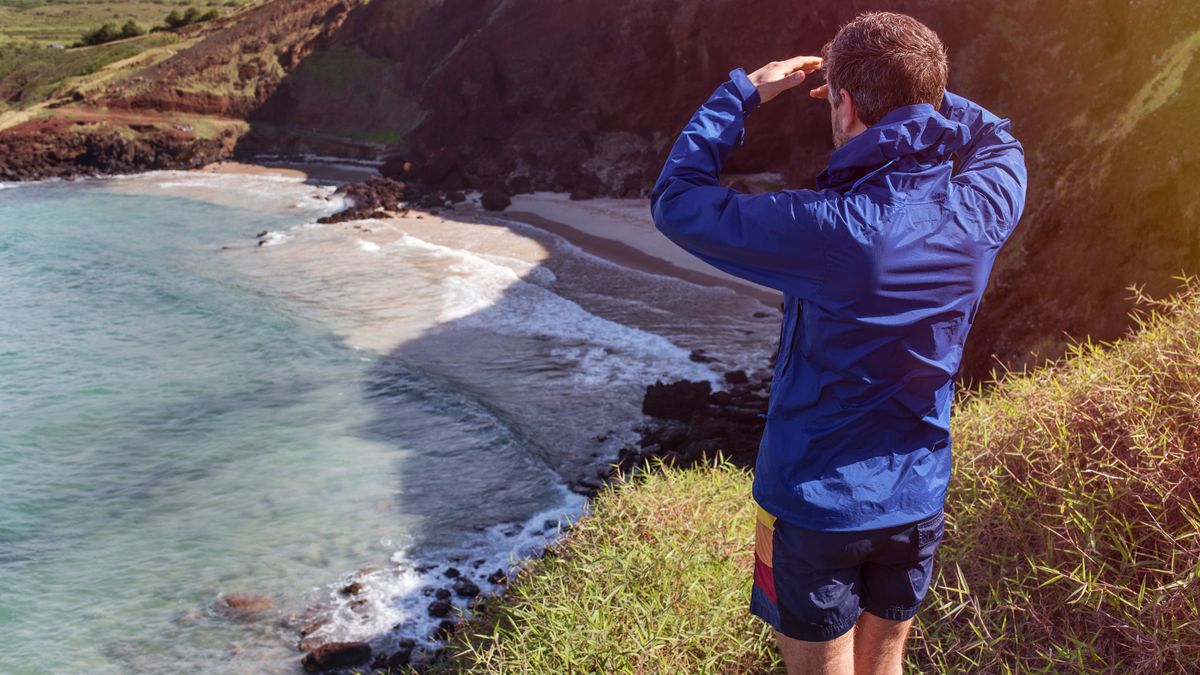
Getting ready for hiking isn’t all leg workouts and packing the best sandwiches. A lot of your time will be spent making sure you’re prepared for whatever mother nature hurls at you when you’re up high. Rocky terrain? Make sure your hiking boots have great grip. Pouring rain? You’ll need a waterproof jacket and rain pants. But what do you do about high winds? In gusty conditions, lots of hikers, trail runners and bikers whip out the extremely lightweight and versatile windbreaker, but what is a windbreaker anyway? And do you really need one for hiking?
In this article, we explain what this piece of outdoor gear is and when it’s the best choice for your outdoor adventures.
What is a windbreaker?
A windbreaker is an extremely lightweight, snug-fitting outer layer jacket that blocks the wind and usually offers some water-repellency, but isn’t waterproof. A windbreaker for hiking will have elasticated cuffs and hem to keep the breeze from sneaking in. Some have hoods, like the Jack Wolfskin Prelite Windbreaker, while others skip the hood and are better designed for trail running, including the Montane Lite-Speed Trail Pull-On.
Windbreakers for hiking, biking and trail running are usually made from polyester or nylon and may be treated with DWR to provide that light water repellency that wards off a light drizzle. The fabric is super light and can be quite fragile, but in return you might get something that weighs as little as 60 grams, in the case of the Montane Lite-Speed.

Do windbreakers make you warm?
Yes and no. Windbreakers aren’t insulated jackets like a fleece or down jacket, but their job is to keep the wind off and in doing so, they do indeed provide warmth. This wouldn’t take the place of an insulated jacket in cold weather, but combined with a base layer made from merino wool, you could actually get a fair bit of warmth on a cool day, especially if you’re hiking or biking and working up some heat anyway.
Why not just wear a waterproof jacket?
Good question. While cyclists are used to wearing windbreakers since if it’s pouring, you wouldn’t usually be out on your bike anyway, hikers are more familiar with wearing a waterproof jacket to keep the wind off. This obviously has the added benefit of keeping you dry if the heavens open, and in rainy climates like the Pacific Northwest and the UK, a rain jacket definitely makes the most sense.
If, however, you’re going to be hiking in a more arid climate like Arizona, Utah, New Mexico, Wyoming and even Colorado and California, a waterproof jacket might actually be overkill. The chances of hiking in the rain are very low, though a lot of those places can be pretty windy, and if you’re venturing into the high country of the Rocky Mountains, for example, you mostly just want something to keep a chill off at the summit. Remember that a windbreaker will keep a light rain at bay too, so if that’s all you’re likely to encounter, it still might be the better choice.
Advnture Newsletter
All the latest inspiration, tips and guides to help you plan your next Advnture!
Wearing a windbreaker instead of a waterproof jacket definitely saves you some weight and room in your backpack, plus newer windbreakers tend to be super breathable with a barely there feel so they’re great for working up a sweat in. Read more about the differences between the two in our article windbreaker vs rain jacket.
One other argument for wearing a windbreaker over a rain jacket is that many hikers feel they are a little more versatile than a waterproof jacket, and prefer them for wearing casually around town or for travelling, but we’ll let you be the judge of that.

When should you wear a windbreaker jacket?
Windbreakers are really great for outdoor adventures in the spring and fall, when the temperatures tend to be chilly but not freezing. For these days, you might find that a fleece jacket is too much for a steep hike, but your base layer on its own isn’t quite enough. Adding a windbreaker provides just enough protection without leaving you sweltering.
In addition, if you’re hiking at high altitude in the warm summer months, remember that the temperature drops as you climb and there isn’t much protection once you get above treeline, so stuff a windbreaker in your backpack just in case you need a little shelter at the top.
Julia Clarke is a staff writer for Advnture.com and the author of the book Restorative Yoga for Beginners. She loves to explore mountains on foot, bike, skis and belay and then recover on the the yoga mat. Julia graduated with a degree in journalism in 2004 and spent eight years working as a radio presenter in Kansas City, Vermont, Boston and New York City before discovering the joys of the Rocky Mountains. She then detoured west to Colorado and enjoyed 11 years teaching yoga in Vail before returning to her hometown of Glasgow, Scotland in 2020 to focus on family and writing.

